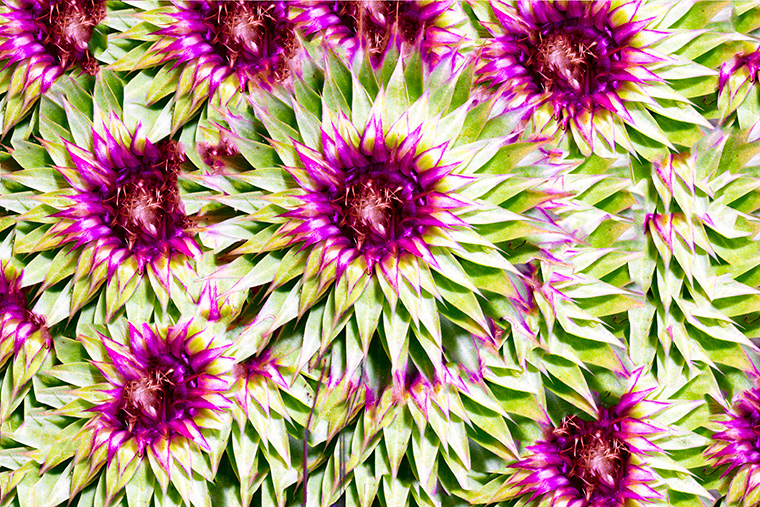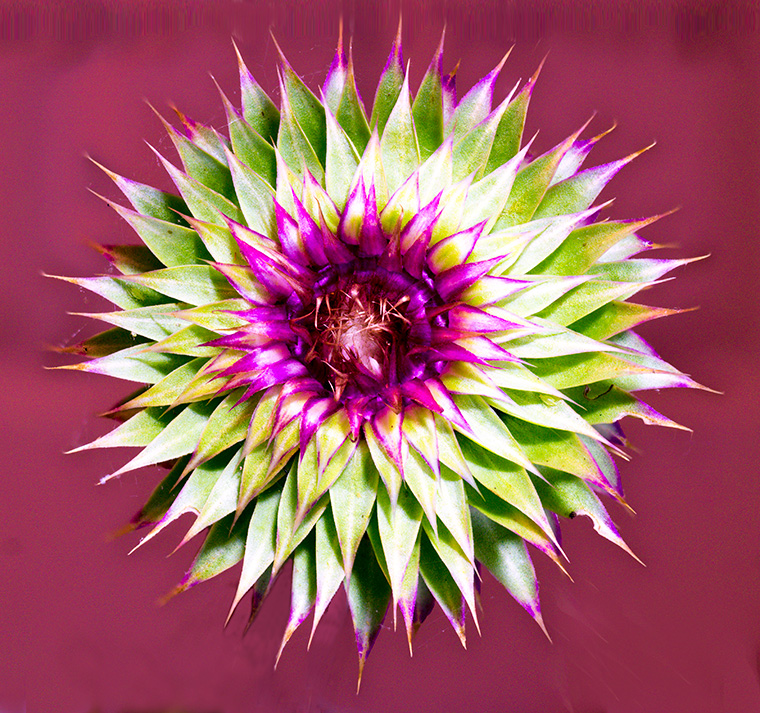Here is a composite shot of a Musk Thistle also known as Nodding Thistle (Carduus nutans). You can see the single flower head that I started with down below.
Quite attractive, but I can understand why it is not universally admired, and it is in fact classified as a noxious weed in many places all over the world. This particular plant was growing along a roadside a couple of miles north of our house. Roadsides, neglected places, and pastures are common habitats for this immigrant from Eurasia. It produces prodigious quantities of seeds. Various numbers are published in the literature, but under good conditions more than 100,000 wind-dispersed seeds may be produced by one plant. So it spreads rapidly to cover entire pastures. Nothing seems to eat it (including native wildlife or livestock) or cause it any disease problems. This condition is common with plants that are introduced from other places, either accidentally or on purpose…none of the insects or diseases that keep them in control in their native habitats are introduced with them. Similar accidental introductions include kudzu, adelgids (insects that are now killing all our native red spruce and hemlock trees), the chestnut blight that played havoc with our chestnut trees and many other examples.
Two insects which attack thistles in Europe (the Thistlehead-feeding Weevil (Rhinocyllus conicus) and the Rosette Weevil (Trichosirocalus horridus) have been released in the U.S. in hopes of providing some biological control. What would you guess happened? The insects did, indeed, eat some Nodding Thistle. But they are also eating some of our native, non-problem thistles, including some rare species we would like to keep around. This is reminiscent of the introduction of the mongoose to Caribbean Islands to control poisonous snakes. The mongoose found it easier to eat the native birds than the snakes!
Back to this thistle…the flower heads are typically borne singly on branches that bend over (droop or nod) a few degrees, hence the common name Nodding Thistle. It is in the family Asteracee (Composites) which also includes familiar plants such as sunflower and daisy. What you are seeing in the center part of the flowering “head” is 50 or more tiny flowers, each of which produces one seed. The group of flowers is surrounded by some formidable spines. The stalks and leaves are also full of spines, so it is difficult to handle or for any grazing animal to eat.
More about this thistle in the next post or two…


